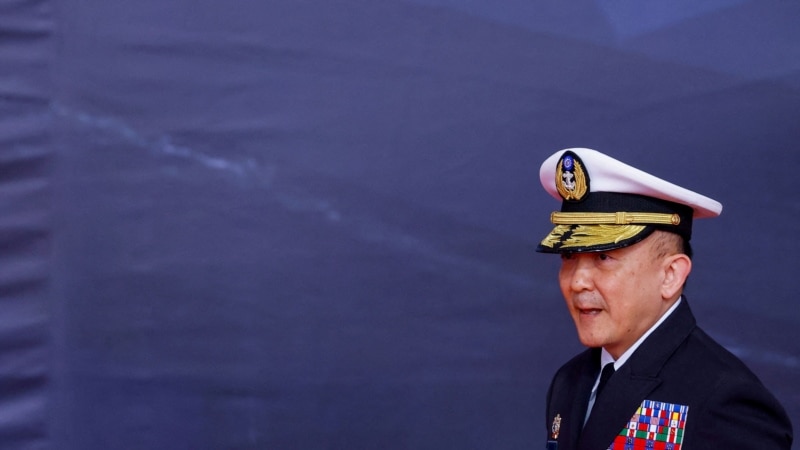
Taiwan’s navy chief, Tang Hua, will visit the United States next week to attend a military ceremony and discuss how to boost bilateral naval cooperation as China raises threats toward the island, six people briefed on the trip said.
While Taiwan and the United States have a close relationship, it is unofficial, as Washington formally recognizes China, not the democratically governed island that Beijing claims as its own territory. Taiwan rejects China’s territorial claims.
The six security sources said Tang would visit Hawaii, home of the U.S. Indo-Pacific Command, for a Pacific Fleet change-of-command ceremony. Three of them said Tang was then expected to attend the April 8-10 Sea-Air-Space conference near Washington and that talks were under way to arrange a meeting with the U.S. chief of naval operations, Admiral Lisa Franchetti.
The sources spoke to Reuters on condition of anonymity given the trip’s sensitivity.
Taiwan’s navy and the Pentagon declined to comment.
China’s defense ministry did not respond to a request for comment. China’s foreign ministry said it firmly opposed “military collusion” between the United States and Taiwan and that Washington should “refrain from sending out any erroneous signal to the forces of secession for the independence of Taiwan.”
Unlike visits to the U.S. by senior officials from allies like Japan and Britain, conducted openly, those of Taiwanese officials, especially military, are kept low key and often not officially confirmed.
Washington and Taipei have had no official diplomatic or military relationship since 1979, when the U.S. switched recognition to Beijing, though the United States is bound by law to provide the island with the means to defend itself.
China has not renounced the use of force to take Taiwan, where the defeated Republic of China government fled in 1949 after it lost China’s civil war to Mao Zedong’s Communists, who established the People’s Republic of China.
Taiwan’s navy is dwarfed by that of China, which is adding nuclear-powered submarines and aircraft carriers. Under a modernization effort President Tsai Ing-wen has overseen, Taiwan is developing its own submarines, the first unveiled last year.
Without fanfare Taiwan and the U.S. have expanded their military cooperation since Tsai took office in 2016, especially since China began ramping up military pressure over the past four years. Beijing now regularly sends fighter jets over the median line of the Taiwan Strait that once served as an unofficial barrier.
Previous U.S. trips by senior Taiwan officers to the United States have included then-navy chief Lee Hsi-ming in 2015 and Deputy Defense Minister Hsu Yen-pu, who last year attended a Taiwan-U.S. defense industry conference in Virginia.
Taiwan typically holds annual security talks in the United States, which neither government officially confirms, and which were attended last year by Taiwan’s foreign minister and the head of its National Security Council, according to Taiwanese media.
Tang’s visit, two sources said, is part of a U.S. effort, called the Joint Island Defence Concept, to coordinate with Taiwan, Japan and others to counter China’s armed forces within the “first island chain” – a string enclosing China’s coastal seas that connects Japan, Taiwan, the Philippines and Borneo, an island split between Indonesia, Malaysia and Brunei.
Taiwan and the U.S. are trying to line up a Tang-Franchetti meeting, which has not been confirmed, said one source, a U.S. official.
Tang on Tuesday accompanied Tsai to a navy base on Taiwan’s east coast for a handover ceremony for two new Tuo Chiang-class corvette warships, which Taiwan’s navy calls “carrier killers” for their high maneuverability, stealthiness and anti-ship missiles.
